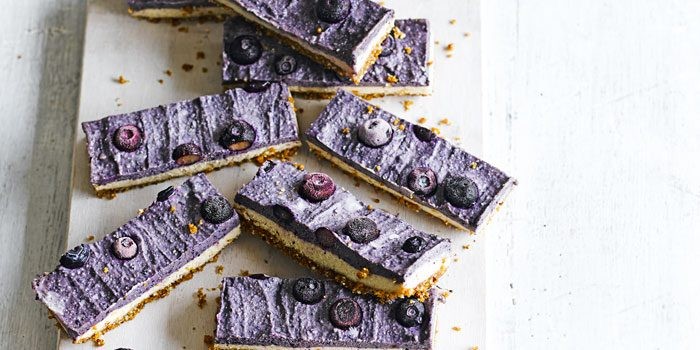The What Is Raw Food movement is more than a trend; it’s a conscious choice to nourish your body with unprocessed, whole foods, offering potential health benefits like increased vitality and improved digestion. At FOODS.EDU.VN, we believe in empowering you with knowledge to make informed dietary choices. Dive into the world of raw cuisine and discover its possibilities, exploring living foods, raw veganism, and the art of preparing delicious, nutrient-rich meals.
1. Decoding the Raw Food Diet
The raw food diet, also known as rawism or living-food diet, is centered around consuming foods and drinks that haven’t been heated above a specific temperature, generally around 104–118°F (40–48°C). The core belief is that heating food destroys valuable enzymes and reduces its nutritional value.
1.1. Core Principles of Raw Food Diet
The raw food diet revolves around a few key principles:
- Unprocessed Foods: Emphasis on whole, unrefined foods in their natural state.
- Minimal Heating: Food is generally not heated above 104–118°F (40–48°C).
- Plant-Based Focus: The diet typically consists predominantly of fruits, vegetables, nuts, seeds, and sprouted grains.
- Enzyme Preservation: Believing that raw foods retain enzymes essential for digestion and nutrient absorption.
- Hydration: Juicing, smoothies, and ample water intake are vital components.
1.2. Historical Perspective of Raw Food Diets
The concept of consuming raw foods dates back to ancient civilizations, but the modern raw food movement gained traction in the 19th century. Early proponents believed in the healing power of uncooked foods. Over time, different interpretations and variations of the raw food diet have emerged.
1.3. Defining Raw Food: What’s In and What’s Out
Understanding what constitutes “raw food” is crucial. Here’s a breakdown:
| Category | Allowed | Restricted |
|---|---|---|
| Fruits | All fresh, dried (naturally), and juiced fruits | Canned fruits, processed fruit products |
| Vegetables | All fresh, juiced, and lightly fermented vegetables | Cooked, canned, or heavily processed vegetables |
| Nuts & Seeds | Raw, sprouted, or soaked nuts and seeds | Roasted, salted, or heavily processed nuts and seeds |
| Grains & Legumes | Sprouted grains and legumes | Cooked grains and legumes |
| Dairy (Optional) | Unpasteurized dairy (if included) | Pasteurized dairy products |
| Meats (Optional) | Raw fish (sashimi, ceviche), raw meat (carpaccio) – consumed with caution | Cooked or processed meats and fish |
| Sweeteners | Raw honey, maple syrup, dates | Refined sugars, artificial sweeteners |
| Beverages | Water, fresh juices, herbal teas (brewed at low temperatures) | Processed beverages, alcohol, coffee |
| Oils | Cold-pressed oils (olive, coconut, flaxseed) | Refined oils, hydrogenated oils |
| Other | Fermented foods (kimchi, sauerkraut), sea vegetables | Processed foods, refined foods, foods with artificial additives or preservatives |


2. The Spectrum of Raw Food Diets: Finding Your Fit
The raw food diet isn’t a one-size-fits-all approach. There’s a spectrum of choices, allowing individuals to tailor their eating plan to their preferences and goals.
2.1. Raw Veganism: Plant-Based Purity
Raw veganism combines the principles of veganism and raw foodism. It excludes all animal products and focuses on consuming uncooked plant-based foods. This approach is favored by those seeking both ethical and health benefits.
2.2. Raw Vegetarianism: A Flexible Approach
Raw vegetarians may include some animal products like raw dairy or eggs in their diet, along with a foundation of raw plant-based foods. This allows for more flexibility and can help meet certain nutritional needs.
2.3. The 75% Raw Approach: A Balanced Lifestyle
Many people find success by incorporating a significant percentage (e.g., 75%) of raw foods into their diet while still enjoying some cooked meals. This offers a balance between the benefits of raw foods and the convenience of cooked options.
2.4. Including Animal Products: A Controversial Choice
Some raw food enthusiasts consume raw animal products like unpasteurized dairy, raw fish (sashimi), or raw meat (carpaccio). This practice is controversial due to potential health risks associated with foodborne illnesses. Extreme caution and proper sourcing are essential.
3. Unlocking the Potential Benefits of Raw Food
Proponents of the raw food diet claim numerous health benefits. While scientific evidence is still evolving, some potential advantages include:
3.1. Enhanced Nutrient Intake: Vitamins and Minerals
Raw foods are believed to retain higher levels of vitamins, minerals, and antioxidants compared to cooked foods. Certain nutrients, like vitamin C and folate, are heat-sensitive and can be lost during cooking.
3.2. The Enzyme Advantage: Supporting Digestion
Enzymes play a crucial role in digestion. Raw food proponents argue that uncooked foods contain natural enzymes that aid in breaking down food, potentially reducing the burden on the digestive system.
3.3. Weight Management: A Natural Side Effect
Raw food diets are often lower in calories and higher in fiber, which can promote satiety and support weight management. The focus on whole, unprocessed foods also eliminates many common culprits of weight gain.
3.4. Improved Digestion: Fiber and Gut Health
The high fiber content of raw fruits, vegetables, and seeds promotes healthy digestion and can help regulate bowel movements. Raw foods also support a healthy gut microbiome, which is essential for overall health.
3.5. Increased Energy Levels: Feeling Revitalized
Many raw food enthusiasts report feeling increased energy levels and vitality. This may be due to the abundance of nutrients, improved digestion, and reduced intake of processed foods.
3.6. Disease Prevention: Antioxidant Power
Raw fruits and vegetables are rich in antioxidants, which help protect the body against cellular damage caused by free radicals. This can contribute to reducing the risk of chronic diseases like heart disease, cancer, and Alzheimer’s.
4. Addressing the Challenges of Raw Food Diets
While the raw food diet offers potential benefits, it’s important to be aware of the challenges and potential drawbacks.
4.1. Nutritional Deficiencies: A Careful Approach
It can be challenging to obtain all essential nutrients on a strict raw food diet, especially vitamin B12, vitamin D, iron, calcium, and omega-3 fatty acids. Careful planning and supplementation may be necessary.
4.2. Protein Concerns: Sourcing Plant-Based Protein
Meeting protein requirements on a raw vegan diet requires careful attention to food choices. Good sources of raw plant-based protein include sprouted grains, nuts, seeds, and leafy green vegetables.
4.3. Digestive Issues: Adapting to High Fiber
The high fiber content of raw foods can cause digestive discomfort for some individuals, especially when starting the diet. Gradual introduction of raw foods and proper hydration can help mitigate these issues.
4.4. Food Safety: Handling Raw Foods with Care
Consuming raw foods carries a risk of foodborne illnesses if proper hygiene and food handling practices are not followed. Thoroughly washing fruits and vegetables, using clean utensils, and storing food properly are crucial.
4.5. Social Challenges: Navigating Social Situations
Following a raw food diet can be challenging in social situations where cooked food is the norm. Planning ahead, bringing your own meals, and communicating your dietary needs can help navigate these situations.
4.6. Time Commitment: Preparation and Planning
Preparing raw food meals often requires more time and effort compared to cooking. Planning meals, soaking nuts and seeds, sprouting grains, and juicing can be time-consuming.
5. Crafting Delicious Raw Food Meals: Recipes and Techniques
Creating satisfying and flavorful raw food meals is easier than you might think. With the right techniques and recipes, you can enjoy a diverse and delicious raw food diet.
5.1. Essential Equipment: Tools for Raw Food Success
- High-Speed Blender: For smoothies, sauces, and creamy desserts.
- Food Processor: For chopping, grating, and making nut butters.
- Juicer: For extracting fresh juices from fruits and vegetables.
- Dehydrator: For making dried fruits, vegetables, and crackers.
- Sprouting Jar: For sprouting grains and legumes.
- Mandoline Slicer: For creating thin, even slices of vegetables.
5.2. Basic Techniques: Soaking, Sprouting, and Dehydrating
- Soaking: Soaking nuts and seeds before consumption improves digestibility and nutrient absorption.
- Sprouting: Sprouting grains and legumes increases their nutritional value and makes them easier to digest.
- Dehydrating: Dehydrating foods at low temperatures preserves their enzymes and creates shelf-stable snacks and ingredients.
5.3. Sample Meal Plan: A Day of Raw Delights
| Meal | Example |
|---|---|
| Breakfast | Green smoothie with spinach, banana, mango, and almond milk |
| Snack | Handful of raw almonds and a small apple |
| Lunch | Zucchini noodles with pesto made from basil, pine nuts, garlic, and olive oil |
| Snack | Carrot sticks with hummus made from sprouted chickpeas |
| Dinner | Raw pizza with a crust made from nuts and seeds, topped with vegetables and cashew cheese |
5.4. Recipe Ideas: Inspiring Raw Food Creations
Raw Chocolate Avocado Mousse
- Ingredients: Avocado, cacao powder, maple syrup, vanilla extract.
- Instructions: Blend all ingredients until smooth and creamy.
Sprouted Quinoa Salad
- Ingredients: Sprouted quinoa, chopped vegetables (cucumber, bell pepper, tomato), lemon juice, olive oil, herbs.
- Instructions: Combine all ingredients and toss gently.
Raw Carrot Cake
- Ingredients: Carrots, dates, walnuts, spices (cinnamon, nutmeg), coconut flakes, cashew frosting.
- Instructions: Process ingredients for the cake base and frosting separately. Layer and enjoy.
6. The Science Behind Raw Food: Examining the Evidence
While anecdotal evidence and testimonials abound, it’s crucial to examine the scientific evidence supporting the raw food diet.
6.1. Studies on Nutrient Retention: Raw vs. Cooked
Research suggests that cooking can reduce the levels of certain nutrients in food, particularly heat-sensitive vitamins like vitamin C and folate. However, some studies have shown that cooking can increase the bioavailability of other nutrients, such as lycopene in tomatoes.
6.2. Enzyme Activity: Fact or Fiction?
The claim that cooking destroys essential enzymes in food is a subject of debate. While heat can denature enzymes, the human body produces its own enzymes for digestion. The role of food enzymes in digestion is still being investigated.
6.3. Long-Term Health Outcomes: What the Research Says
Limited long-term studies have examined the health outcomes of strict raw food diets. Some studies have shown that raw food diets can lead to weight loss and improved cholesterol levels. However, other studies have raised concerns about potential nutrient deficiencies and bone health. A study shows that those who follow such a plan have a lower body mass index (BMI) than omnivores, and are more likely to fall into the ‘underweight’ category. Another research has found that women are more likely to experience disruptions to their menstrual cycle, including amenorrhea.
6.4. Expert Opinions: Nutritionists and Dietitians Weigh In
Nutritionists and dietitians generally recommend a balanced and varied diet that includes both raw and cooked foods. They emphasize the importance of meeting individual nutrient needs and addressing any potential deficiencies.
7. Optimizing Your Raw Food Journey: Tips for Success
Embarking on a raw food diet requires careful planning and attention to detail. Here are some tips to help you succeed:
7.1. Start Slowly: Gradual Transition
Avoid making drastic changes to your diet overnight. Gradually incorporate more raw foods into your meals over time.
7.2. Plan Ahead: Meal Prep and Shopping
Plan your meals in advance and create a shopping list to ensure you have all the necessary ingredients on hand.
7.3. Listen to Your Body: Adjust as Needed
Pay attention to how your body responds to the raw food diet and adjust your food choices and meal plans accordingly.
7.4. Hydrate: Drink Plenty of Water
Drink plenty of water throughout the day to support digestion and overall health.
7.5. Seek Support: Connect with Others
Connect with other raw food enthusiasts for support, inspiration, and recipe ideas.
7.6. Supplement Wisely: Addressing Deficiencies
Consider supplementing with vitamin B12, vitamin D, iron, calcium, and omega-3 fatty acids, especially if you are following a strict raw vegan diet.
7.7. Prioritize Variety: Diverse Food Choices
Choose a wide variety of raw fruits, vegetables, nuts, seeds, and sprouted grains to ensure you are getting a broad spectrum of nutrients.
8. Raw Food Around the World: Global Inspiration
The raw food movement has gained popularity worldwide, with different cultures incorporating raw food principles into their traditional cuisines.
8.1. Raw Food Restaurants: A Culinary Adventure
Raw food restaurants can be found in many major cities, offering creative and delicious raw food dishes. These restaurants provide a great way to experience the variety and potential of raw cuisine.
8.2. Cultural Adaptations: Raw Food with a Twist
Different cultures have adapted the raw food diet to their local ingredients and culinary traditions. For example, raw sushi and ceviche are popular in Japanese and Latin American cuisine, respectively.
8.3. Learning from Other Cultures: Expanding Your Palate
Exploring raw food traditions from around the world can expand your palate and inspire new recipe ideas.
9. Common Myths About Raw Food: Debunking Misconceptions
There are many misconceptions about the raw food diet. Let’s debunk some of the most common myths:
9.1. Myth: Raw Food Is Boring and Bland
Fact: Raw food can be incredibly diverse and flavorful. With the right techniques and recipes, you can create delicious and satisfying meals.
9.2. Myth: Raw Food Is Only for Vegans
Fact: While raw veganism is a popular approach, the raw food diet can be adapted to include animal products like raw dairy or fish.
9.3. Myth: Raw Food Is Too Expensive
Fact: While some raw food ingredients can be expensive, a raw food diet can be affordable if you focus on seasonal produce and buy in bulk.
9.4. Myth: Raw Food Is Time-Consuming
Fact: While some raw food recipes require more time and effort, many simple and quick raw food meals can be prepared in minutes.
9.5. Myth: Raw Food Is Not Suitable for Everyone
Fact: While the raw food diet may not be suitable for everyone, it can be adapted to meet individual needs and preferences. Consult with a healthcare professional or registered dietitian to determine if a raw food diet is right for you.
10. Beyond the Plate: Raw Food and Sustainability
The raw food diet aligns with principles of sustainability by emphasizing whole, unprocessed foods and reducing reliance on industrial food production.
10.1. Reducing Food Waste: Using the Whole Plant
Raw food proponents often advocate for using the whole plant, including stems, leaves, and peels, to minimize food waste.
10.2. Supporting Local Agriculture: Farm-to-Table
Choosing locally sourced, seasonal produce supports local farmers and reduces the environmental impact of transportation.
10.3. Minimizing Processing: Reducing Energy Consumption
By minimizing food processing, the raw food diet reduces energy consumption and pollution associated with industrial food production.
The world of raw food is vast and exciting, offering a path to enhanced health, vitality, and sustainability. Whether you’re a seasoned raw foodist or just curious to learn more, we at FOODS.EDU.VN are here to guide you every step of the way. Remember, the key to success lies in informed choices, mindful planning, and a spirit of culinary adventure.
Ready to explore further? Discover more delicious recipes, expert tips, and in-depth articles at FOODS.EDU.VN. Let us empower you to make informed choices and embark on a journey of culinary discovery. Contact us at 1946 Campus Dr, Hyde Park, NY 12538, United States. Reach out via Whatsapp at +1 845-452-9600, or visit our website at FOODS.EDU.VN. Your adventure in the world of raw cuisine awaits]
FAQ: Answering Your Raw Food Questions
Here are some frequently asked questions about the raw food diet:
1. What exactly is the raw food diet?
The raw food diet involves consuming foods and drinks that haven’t been heated above 104–118°F (40–48°C), believing that heating destroys valuable enzymes and reduces nutritional value.
2. What foods can I eat on a raw food diet?
You can eat fruits, vegetables, nuts, seeds, sprouted grains, and legumes in their natural, unprocessed state. Some raw food enthusiasts also consume unpasteurized dairy, raw fish, or raw meat.
3. Is a raw food diet healthy?
A raw food diet can be healthy if carefully planned to meet all nutritional needs. It’s important to ensure adequate protein, vitamin B12, vitamin D, iron, calcium, and omega-3 fatty acids.
4. What are the benefits of eating raw food?
Potential benefits include enhanced nutrient intake, improved digestion, weight management, increased energy levels, and disease prevention due to the abundance of antioxidants.
5. What are the challenges of a raw food diet?
Challenges include potential nutritional deficiencies, digestive issues, food safety concerns, social challenges, and the time commitment required for preparation and planning.
6. How do I start a raw food diet?
Start slowly by gradually incorporating more raw foods into your meals. Plan your meals in advance, listen to your body, and seek support from other raw food enthusiasts.
7. Can I get enough protein on a raw vegan diet?
Yes, you can get enough protein on a raw vegan diet by consuming sprouted grains, nuts, seeds, leafy green vegetables, and other plant-based protein sources.
8. Is it safe to eat raw meat or fish?
Eating raw meat or fish carries a risk of foodborne illnesses. If you choose to consume raw animal products, it’s crucial to source them from reputable suppliers and follow proper hygiene and food handling practices.
9. How do I make raw food taste good?
Experiment with different herbs, spices, sauces, and dressings to enhance the flavor of raw food dishes. Soaking, sprouting, and dehydrating can also improve the taste and texture of raw ingredients.
10. Where can I find more information about the raw food diet?
Visit foods.edu.vn for more information, recipes, tips, and resources on the raw food diet. You can also consult with a healthcare professional or registered dietitian to determine if a raw food diet is right for you.
